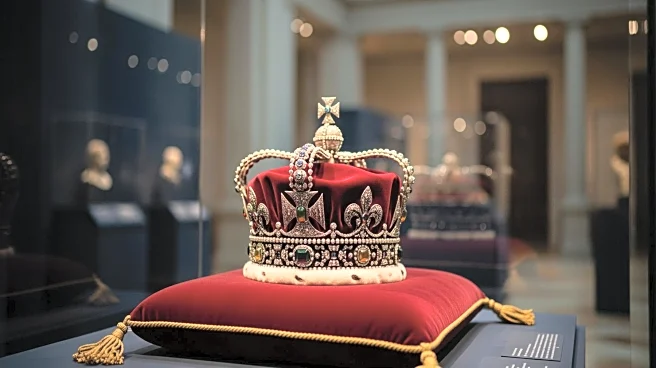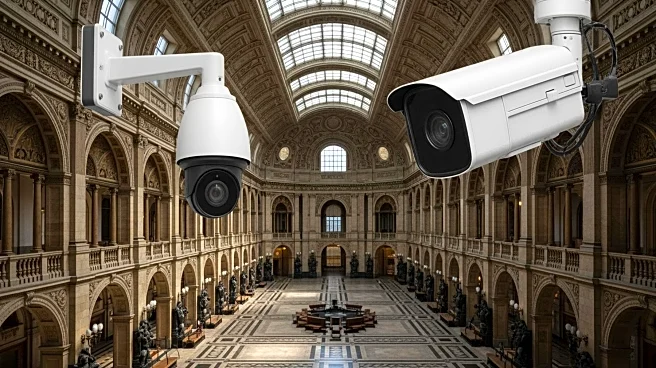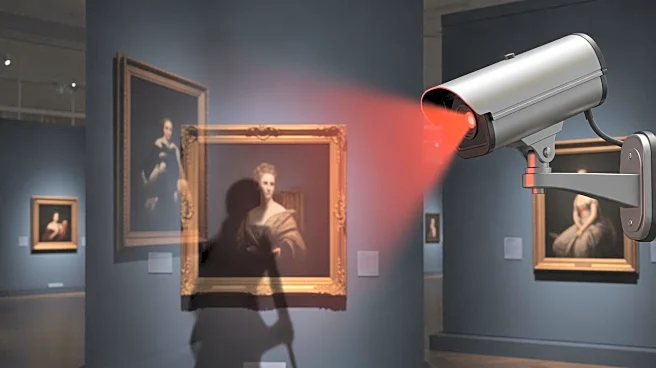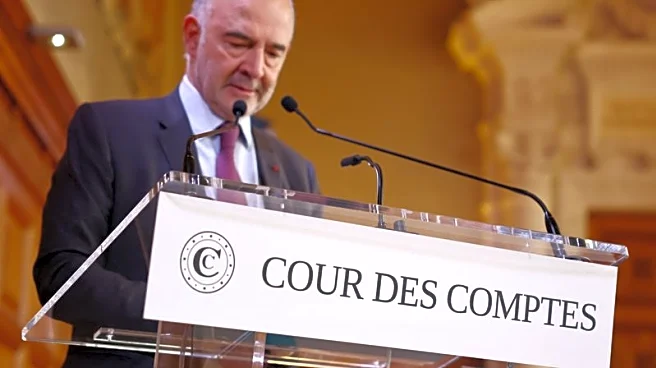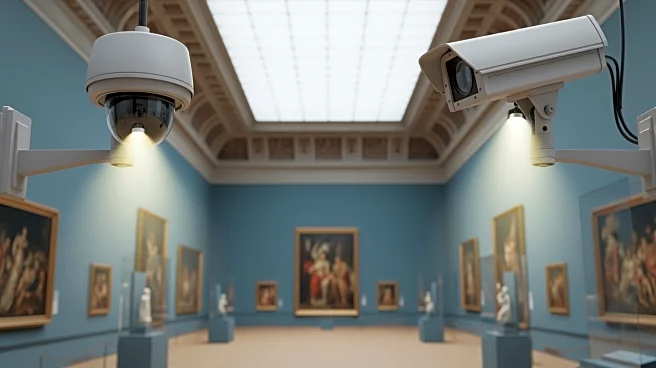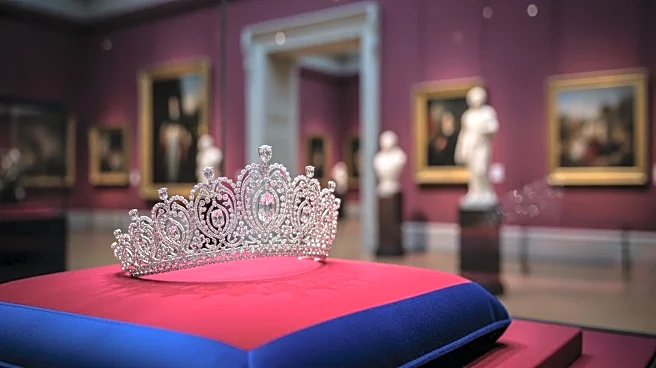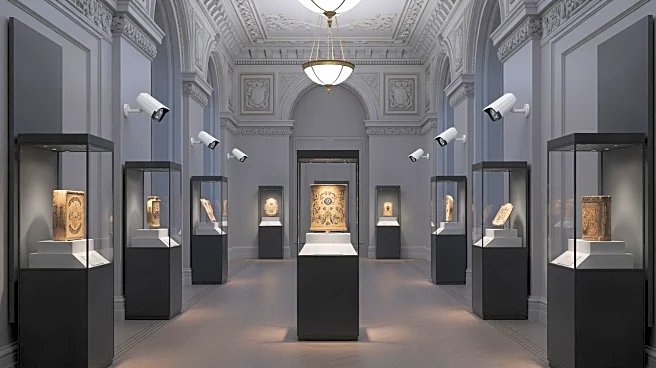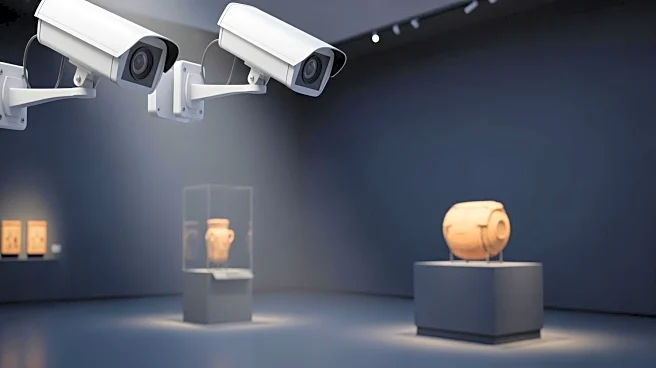What's Happening?
The Louvre Museum in Paris is set to restore the imperial crown of Empress Eugénie, which was damaged during a recent robbery. Thieves stole eight objects from the museum, including a sapphire diadem and
necklace, but the crown was recovered outside the museum. The museum's director, Laurence des Cars, announced that the restoration will be financed by patrons and supervised by a scientific committee. Des Cars offered her resignation following the robbery, which was declined by the culture minister. The incident has highlighted security concerns at the museum, prompting calls for modernization of its facilities.
Why It's Important?
The restoration of the crown is significant as it symbolizes the Louvre's resilience and commitment to preserving historical artifacts. The robbery has raised concerns about the security of cultural heritage sites, emphasizing the need for improved security measures. The incident also underscores the challenges faced by museums in balancing visitor experience with artifact protection. The Louvre's modernization plans, including security upgrades, are crucial for safeguarding its collections and maintaining its status as a leading cultural institution.
What's Next?
The Louvre is expected to proceed with its 'Louvre New Renaissance' plan, which includes security improvements and infrastructure modernization. The plan aims to address overcrowding and enhance visitor experience, with a dedicated gallery for the Mona Lisa by 2031. The museum's response to the robbery may influence other cultural institutions to reassess their security protocols. Stakeholders, including government officials and cultural organizations, are likely to monitor the Louvre's progress in implementing these changes.
Beyond the Headlines
The theft has reignited discussions about the colonial origins of many artifacts in the Louvre's collection. The museum faces ongoing criticism for its slow progress in repatriating colonial-era treasures. The incident may prompt further scrutiny of the ethical implications of artifact ownership and the responsibilities of cultural institutions in addressing historical injustices.
